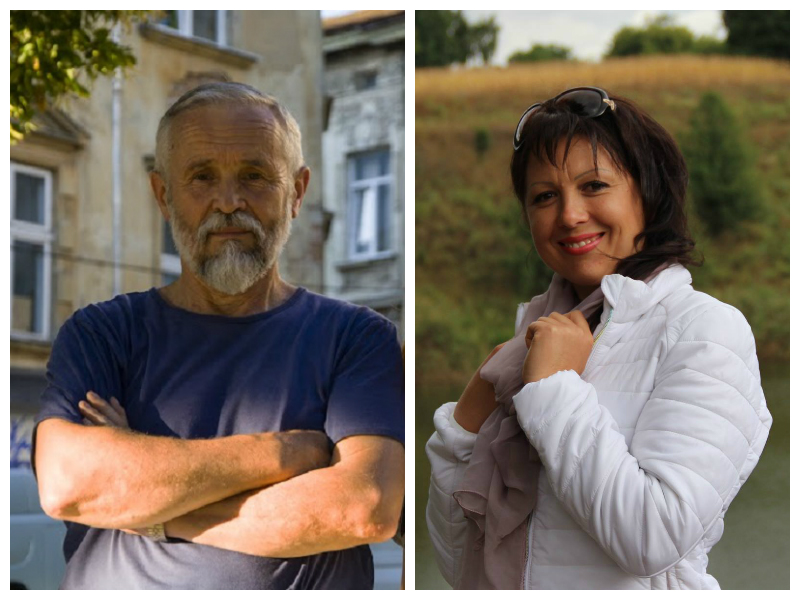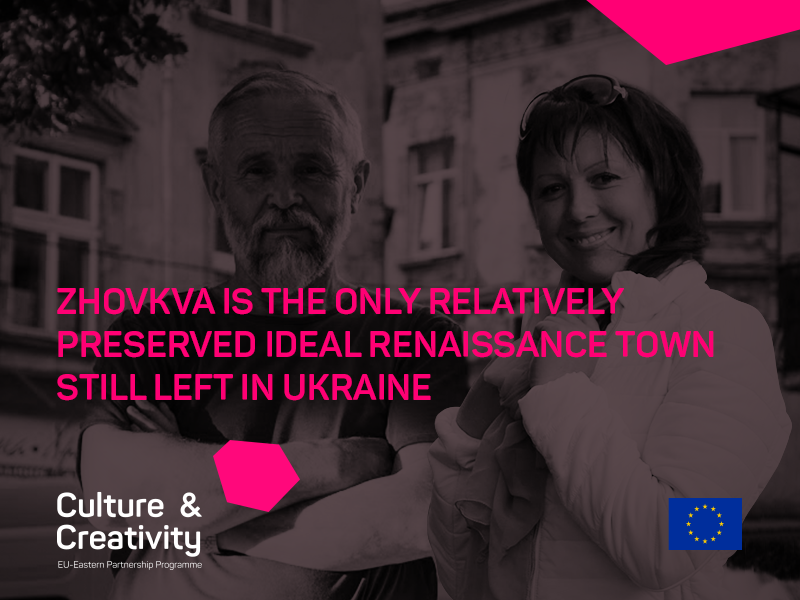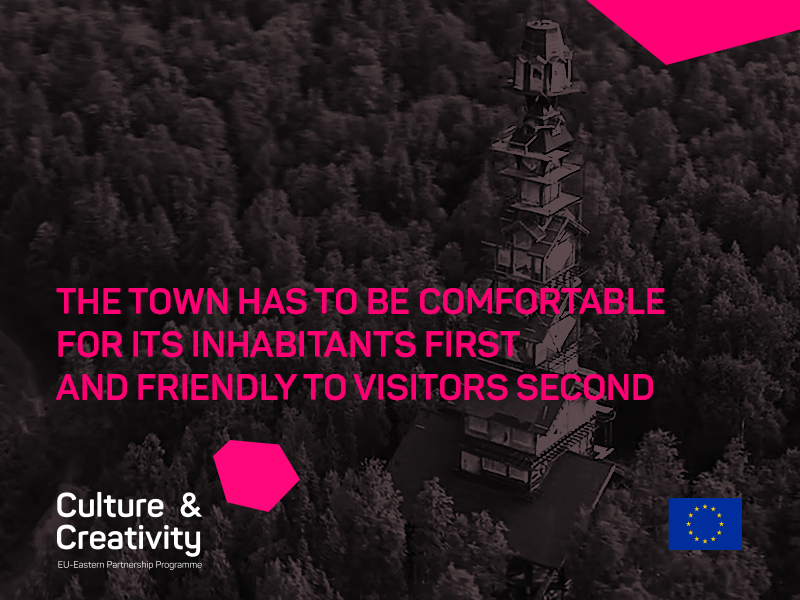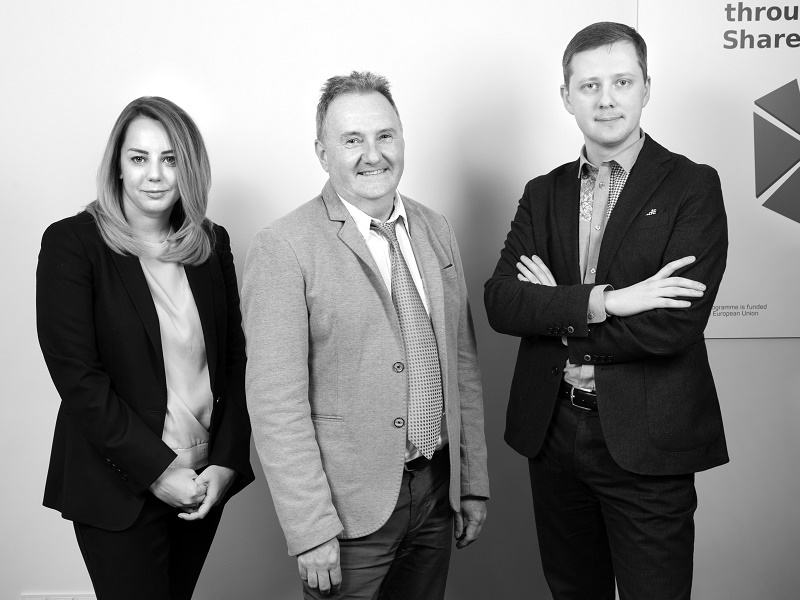
Representatives of COMUS Pilot Towns: “We Want to Create the Town of Our Dreams”
The goal of the joint Council of Europe/European Commission project known as COMUS is the enhancement of cultural heritage to stimulate the development of local communities. In Ukraine, the participating cities are Lutsk and the two district cities, Zhovkva and Pryluky. The last two are very different and each faces its very own sets of challenges. However, they share one thing: they both have motivated people seeking to improve the lives of their inhabitants.
Zhovkva: Cultural heritage is the foundation of development
“Zhovkva was part of the Eastern Partnership project for the revitalisation of cultural heritage in historic towns in 2010-2011,” says Mykhailo Kubai, head of the NGO “Light of Culture”. “That project died a slow death. It was later revived under the name COMUS. During the selection process, Lutsk won, but later we were told that we were the second pilot town.”
During the first version of the project, we carried out a diagnosis of the city. We are using these two bulky documents now. Analysis has shown that Zhovkva’s cultural heritage is its first development resource. It also revealed a number of problems that hamper it.
Infrastructure and the inhabitants’ interest: Two cornerstones of the project
As a result of the diagnosis, we were able to establish that the main problem is the lack of awareness and activity on the part of the city’s inhabitants. This problem brings about the others. Therefore, we first want to raise awareness among the population and rouse the community.
We consider that one of the reasons for this lack of awareness is that Zhovkva has twice experienced complete interruption of its cultural tradition and eradication of its entire population. The last time this happened was during World War II. Of the pre-war population of roughly 9,000 people, less than a thousand survived. The Poles left, the Jews were annihilated, and most of the Ukrainians died or emigrated. The city was re-populated with Russian officials, teachers from the East and people from neighbouring villages. The people who arrived did not know what was there before them. In Soviet times, interest in the city was not promoted. Until the 1990s, people did not know about its cultural heritage. Today, the situation is better, but people should still be nudged to actively participate.
Secondly, we need to work on town planning documentation. Without such documentation, cultural sites cannot be properly preserved because business interests do not take into account moral and cultural aspects.
The third problem we found was inadequate development, and at times, the absence of technical infrastructure. These include water supply networks, sewerage, electricity networks, and transport infrastructure. Even our central part is only half covered by sewerage infrastructure. There are also problems with the flooding of basements and areas because of rain and the river.
Next, there is the technical condition of historical residential buildings. Everything is dilapidated in the centre. The difficulty also resides in the fact that these buildings are primarily inhabited by low-income groups who lack cultural awareness. Nobody is planning to evict. Entrepreneurs wanted to buy certain flats, but the asking prices were too high.

How can change in the town be brought about?
We have developed a big investment project for the restoration and revitalisation of the central square neighbourhoods. We will subsequently apply this experience to other residential neighbourhoods. What do we want to do? As a rule, each yard has disused workshops, lofts and basements. We plan to use them to develop small business.
It is possible that some of the people will take the investors’ offers and move to new high-rise blocks. We want to start an analysis of the situation in autumn so that we have a fully formed picture by winter. Then we will start meeting with inhabitants, consulting with them and seeking sources of financing.
Public buildings are also in need of restoration. Zhovkva is the only relatively preserved ideal Renaissance town still left in Ukraine. That is, it is not merely made up of architectural monuments, but rather it is a colossal town-planning complex.
We want to restore defensive structures. The restoration of the castle involves creating a place where young people would be able to spend their free time. We also have an active group made up of 10 people who annually organise festivals. But they do not have spaces, and that is why they meet in the town hall. But this is no good. We have set our sights on spaces and would like to reach agreement on their free use.
In the centre, students who come to Zhovkva for work experience would be able to reside. In addition, a volunteer and employment centre can be created there during the summer holidays. The main goal is to attract young people to be socially active and awaken their interest in the city.
A look into the future
We expect an inflow of tourists to increase as a result of the project. Roughly 40,000 tourists visit Zhovkva every year. We expect this figure to reach 100,000-200,000. In this case, we are talking about 12 million in annual revenue. But we do not want to oversaturate Zhovkva with tourists. The town has to be comfortable for its inhabitants first and friendly to visitors second.
“The main thing, thanks to COMUS, is that potential investors will see that we are working seriously. They will understand that we know what we want.”
Perhaps, there will be some resources within the framework of the project. But we are counting on foreign donors, local businessmen or state bodies showing interest in us.
We have not yet presented our ideas for public discussion because we want to set out something concrete. There are currently 10 people working in the project: representatives of the community, business and authorities. I believe that after presenting the project, residents would want to help too.
I can share another prophecy:
“Significant past development is a serious foundation for future development. It is not easy to do because most of the people are unconsciously resisting it. But past ideas and achievements will, to a large extent, influence people.”

Pryluky: A compact-life city that wants more
“It just so happens that in Pryluky there are no disputes or misunderstandings,” says the director of the local lore museum Tetiana Zots. “The stakeholder group agrees that cultural heritage should be the foundation for solving the problems of inhabitants and developing the town. Our working group consists of 5-6 persons. The stakeholder group is made up of some 20 persons. It includes local lore specialists, historians, architects, artists, local government bodies, the media and businessmen. A few from each field.
There should be space for each and every resident in the town
We have decided on the five project ideas. The first is the creation of a creative space. It is the main one, as for the implementation of the other four, inhabitants would be able to meet in this cultural centre. This idea is time-consuming and requires the most financing.
There is a powerful cultural movement in our town, but it is somewhat stratified; some do not have their space for expression and manifestation. We thought that they could find work space and work together in the centre that will be housed in the former house of state counsellor Vladimir Shkuratov. The building is empty and has 1,100 square metres of space and a yard of around a hectare. We can save the building and solve the problems of our cultural professionals. There, disabled people will be able to attend workshops and foundations can be based there. Moreover, the museum of local lore is currently housed in rented space, which does not meet its needs, for there are no exhibition and conference halls. Our active youth meet in the house of culture but they do not have organisational headquarters. This centre will stage workshops, house holiday rooms, a film theatre, a modern library, a children’s playground, an anti-café. We want to give each and every person his or her own piece.
Preserving the past
The other project idea is preservation of neighbourhood-scale edifices from the 19th and 20th centuries on the so-called elite street (Himnaziyna Street.). Famous figures, town counsellors, teachers and doctors lived there. On this street, there are buildings with original brickwork and neighbourhood-scale construction. The problem is that private owners clad their homes with modern materials. Thus, we are losing history. Although there are owners who, on the contrary, colour their houses in bright colours, making them very picturesque. Of course, it is difficult to take decisions against private property, but we want to prepare a programme that would be capable of influencing human conscience, a respectful approach to cultural heritage. But, of course, people need to be offered incentives for this: funding repair works, provide services that would carry this out on a permanent basis.
The third project idea has to do with the old central cemetery. Unfortunately, the cemetery is in a state of disrepair. Outstanding town figures who left an impact on the history of our town are buried in it. Although a large number of gravestones has not survived to this day, it is a place of reverence. This may become a monument of local significance.
Another idea concerns the observation platform on the right bank of the River Uday, considered a monument of archaeology. It is a wetland but the platform can become a theatre or concert site. It looks a little hollow: although there is a monument there, it lacks a logical conclusion.
The final idea has to do with Shevchenko Square. It is the demarcation of the historical part and is part of the chronicled area of the town. Its turn has not come yet for reconstruction. There is a central square nearby—a favourite leisure spot—but Shevchenko Square spoils the picture. However, it too can become such a place for the well-being of the town’s inhabitants.

How interaction between inhabitants and experts takes place
All our projects do not solve housing problems. They are aimed at providing big cultural services needed by the inhabitants of Pryluky. We often hold large fairs, celebrations, the town is in constant motion, especially in recent years. That is why the issue of creating a cultural centre arises.
Before agreeing the project ideas with COMUS coordinators, there was discussion in the town. We informed people through the media, conducted surveys both in person and online. At certain hours, they could call us and suggest ideas.
In the process of formulating our ideas, we were also learning, as COMUS engages experts. Several training sessions have already been held. It is a large set of knowledge, impressions and comparisons. It sometimes seems like you know everything, but you still obtain a fair share of new ideas. We are absolutely not limited in possibilities for attracting specialists. But it is a shame that we have not learnt to use this to its fullest extent. We are a little reticent, reserved. When there was a seminar in Pryluky, experts said, after hearing our idea about a creative centre, that we could have a colony of artists. Obviously, this cannot happen at town level, not even at the level of Ukraine. It can happen at European level. This is precisely where we can’t get to now.
“We see everything narrowly: there’s a problem, give us resources, we’ll do it. But in fact we have to look a little deeper and further.”
The result is the town of our dreams
The project involves formulating a project as the final result. Subsequently, COMUS will help to offer this wonderful pie that we baked for investors. But they do not necessarily have to be European investors, they can also be state bodies. Four projects can be financed at local level, but our main idea requires a lot of funding. If we fail to be an attractive investment prospect for European investors, we hope to find willingness to invest on the part of Ukrainians. But our greatest success will be if absolutely every investor finds our project interesting.
Why have we undertaken all of this? Because we want tourists to find our city attractive and our youth to stay here. Pryluky is for now a family town of compact life. But we would like to make it better in terms of providing services.
About COMUS
The COMUS (Community-Led Urban Strategies in Historic Towns) project is a joint Council of Europe/European Union initiative. It seeks to develop innovative town planning to solve problems in historical towns. The project covers the six countries of the Eastern Partnership: Armenia, Azerbaijan, Belarus, Georgia, Moldova and Ukraine.
COMUS envisages synergy between local communities and state bodies in order to improve the urban environment and prevent neglect of the historical heritage of small towns. Moreover, one of the most important goals of the project is to stir local inhabitants to participate directly in the decision-making process and work out development strategies for their towns.




